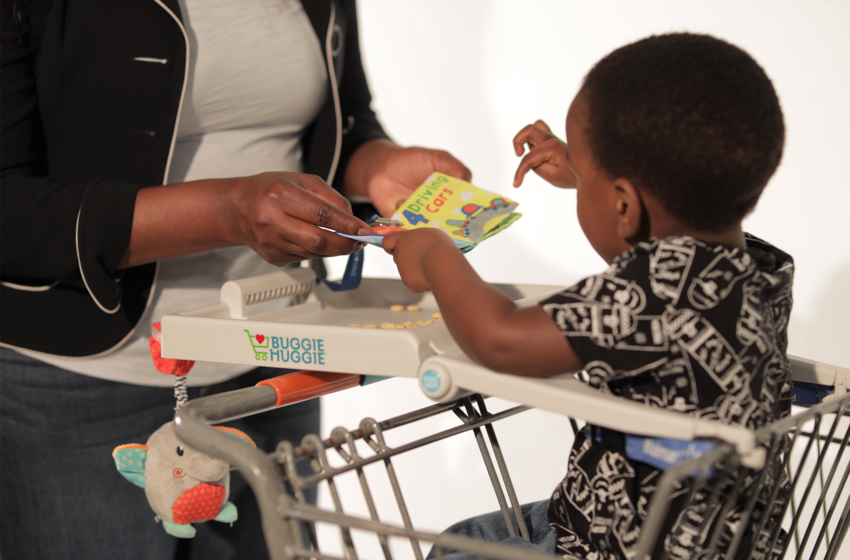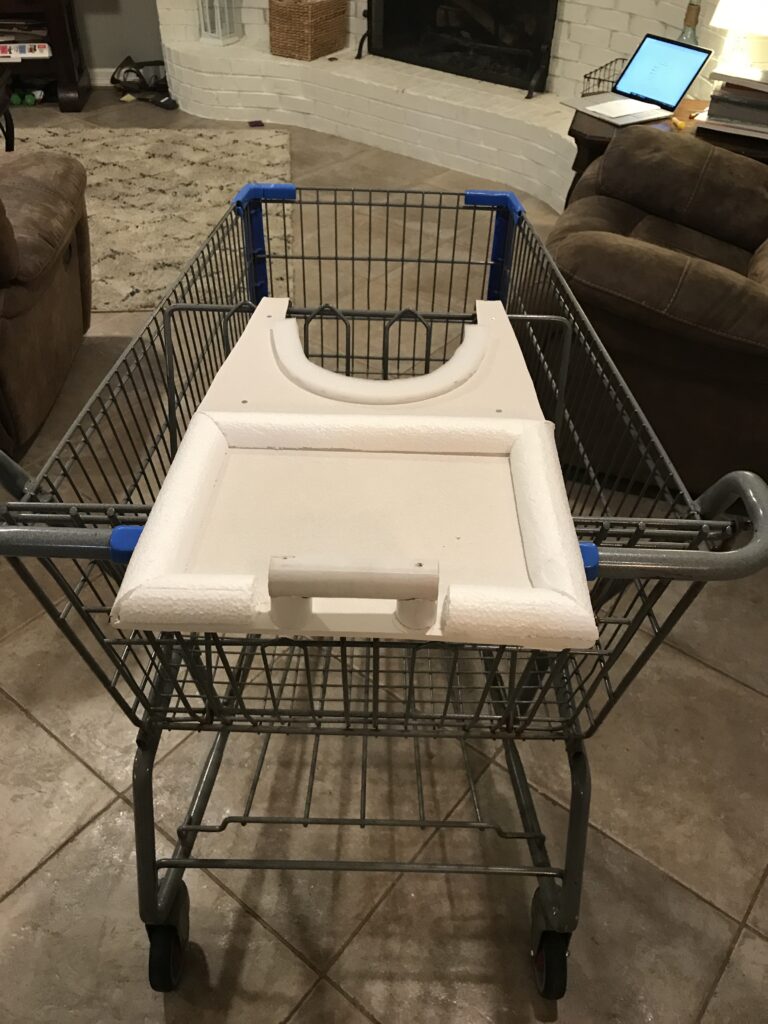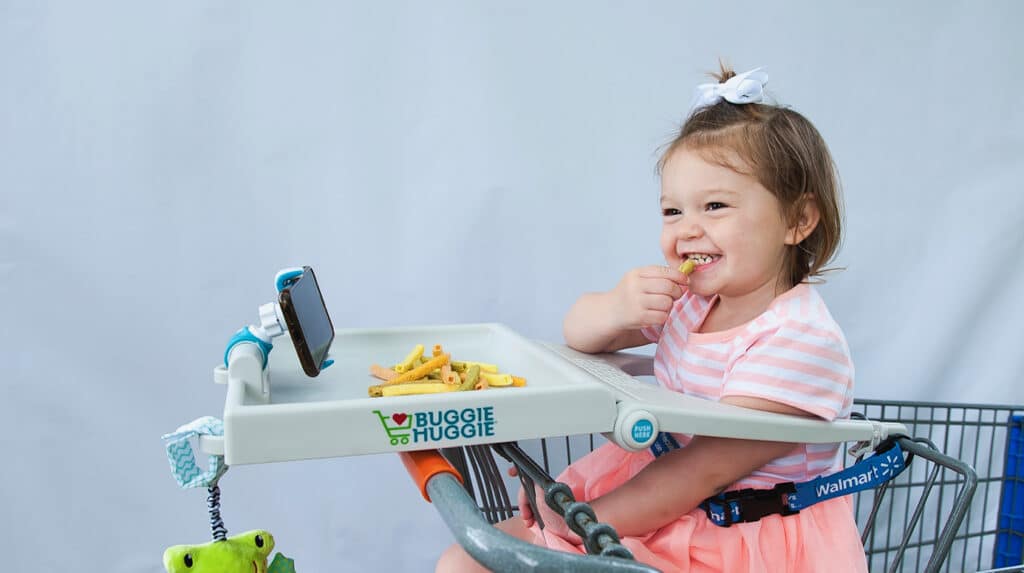These Texas Parent-Entrepreneurs Are Solving Big Parenthood Problems

In many ways, parenthood and entrepreneurship are similar journeys. Both are exhilarating—and a little scary. And both involve taking steps that are entirely new to you. No matter how many books you read on either subject, nothing can quite prepare you for raising a child or creating a new business venture. You’ve got to do it yourself.
Now imagine making both journeys at the same time. That’s exactly what these Texas parent-preneurs are doing, and doing well. Stephanie Parker and Nichole Clark were each driven by parenting challenges to create successful products that they turned into successful businesses. Both—along with their husbands—are taking some of the stress out of parenting a baby, and creating more space for the happy times between parent and child.
Sleeping Baby
Stephanie & Brett Parker – Fort Worth
Flagship product: The Zipadee-Zip
The problem: Stephanie and Brett’s baby daughter was having trouble sleeping through the night. For the first couple of months of her life, they had wrapped her in comforting swaddle, but now that she’d learned to roll, it was no longer safe to swaddle. Almost hourly, the baby would wake herself up, rub her face, and cry. They learned that this was caused by the baby’s Moro reflex—a sudden startle that causes the baby seek support by throwing out its arms.
The light bulb moment: Stephanie and Brett realized they needed a garment that would provide the comfort and resistance of swaddling—helping to soothe the startle reflex—but also allow the baby to safely push up and roll over without a loose blanket in the crib.
The entrepreneurial solution: The Zipadee-Zip, a blanket that zips snugly around the baby. Like a regular swaddle, it comforts the baby by recreating the cozy feel of the womb—but it’s also loose enough that if the baby wakes, he or she can wiggle safely into a more comfortable position and fall back asleep quickly.

The driving force behind the venture: Stephanie has a lot of respect for working moms, but her heart’s desire was to be home with her child. “I didn’t set out initially to start a business,” says Stephanie. “I wanted to start a business to be able to stay at home with my daughter. That prayer was answered when my daughter stopped sleeping through the night.”
The early days: For much of the takeoff period, Stephanie was a one-woman show. “I started out sewing everything myself, handwriting all the thank-you notes, answering every email, packaging and shipping everything myself. It grew to the point where it became overwhelming. Eventually, my sweet husband, who at the time was working for corporate America, went to the local fabric store to try find seamstresses who could help as we grew.”
Stephanie notes that it wasn’t stellar sewing abilities that got the business off the ground. “I’m a terrible seamstress,” she says. “People weren’t buying them because they were pretty—they were buying them to help their babies sleep. I was making them on a sewing machine I had from eighth grade, and there were strings all over the. It was truly a miracle from the hand of God that we grew as quickly as we did.

The market reaction: It didn’t take long for sleepless parents to catch on to the Zipadee-Zip. “Within four months, we’d done $80,000 in sales,” says Stephanie. And then came the big wave: Stephanie and Brett went on Shark Tank. They charmed the judges and were offered a $200,000 investment from Daymond John for a 20 percent stake in Sleeping Baby. They ultimately didn’t take the offer, but within weeks of appearing on the show, they’d sold through inventory they thought would last for months. “People were selling their used Zipadee-Zips on eBay for $150 a piece!” says Stephanie. “It was a huge blessing to see the results of being on that show.”
A challenge overcome: Like every company that’s scaling up fast, Sleeping Baby experienced its share of bumps in the road. “After we were on SharkTank, a fulfillment center we had hired mis-shipped or didn’t ship nearly 1,000 orders. We didn’t know about it until people were emailing us weeks later, saying, ‘Where’s my order?’ It was an absolute nightmare.”
Like a true entrepreneur, though, Stephanie applied herself to the failure and turned it into a win. “I got on my knees and prayed for some sort of solution. I got a Facebook message out of the blue, from someone who worked at this fulfillment company. She said, ‘I know they messed everything up, but I’m going to do whatever it takes and work extra hours, because I believe in what you guys are doing.’ She ended up coming over to work with us. We brought shipping in-house under her guidance.”
A key lesson from the journey: “Sometimes no is your best yes,” says Stephanie. Before they went on Shark Tank, they had considered it a previous time. Turning down the first opportunity was incredibly painful for Stephanie, but it turned out to be the right decision. “Had we gone on Shark Tank then, the sheer pressure without having a group of people and processes in place—I don’t think we would’ve made it. Looking back, it was the best no we ever gave.”
It was rocky once they did go on the show, but Stephanie and Brett had the operational grounding to capitalize on the exposure. “When we finally said yes to going on, we had been able to hire a customer service representative and found a fulfillment center and manufacturer.”
The next generation of entrepreneurs: Stephanie and Brett’s entrepreneurial drive is apparent in their kids too. “Recently my daughter came to me and said, ‘Hey, can we buy some squish balls so I can sell them to the neighborhood?’ And that’s what she did—she walked around the neighborhood with her little friend and they sold squish balls. She made earrings for a while and would sell them at recess. She loves doing that. And I never pushed her to do that or anything!”
Buggie Huggie
Nichole & Jack Clark – Cedar Hill
Flagship product: The Buggie Huggie™
The problem: When Nichole and Jack’s son, Jonah, was just two years old, he started getting extremely squirmy in the cart on every shopping trip. “He figured out how to get out of the buckle of shopping carts just like a ninja,” says Nichole. “He was up and out in a flash. It didn’t matter if I was right there—he was determined to find a way out. One time we were at Target, and I had my hand on the basket. I turned to get a can of beans, and he was up and out. He actually fell out of the shopping cart and hit his head on the floor. I had to sign a waiver at Target, and I felt like the worst mom in the world.”
There’s got to be a better way, Nichole said to herself one day. “In the car, you have a car seat. At the dinner table, you have a high chair. But the shopping cart didn’t have this extra layer of protection. I said, ‘OK, we’re going to do something about this.’”
The light bulb moment: Nichole’s first solution was a bust: she simply put a booster chair in the shopping cart. But that caused its own problem, since there was no real space for groceries. “I was packing the groceries all around him,” says Nichole. But she noticed that the booster seat did have one advantage: a tray that kept little Jonah occupied. “The light bulb went off when I saw that tray gave him a place to play and have his snack. Kids want to explore, and the regular shopping cart didn’t offer that space for him. With the tray, I could go around the store and pick up items for him to play with on the tray. Then he’s entertained and he’s engaged”—and it’s much harder for him to stand up or crawl out or potentially fall out again.
The entrepreneurial solution: Based on this insight, Nichole’s husband, Jack, and Jack’s father, an experienced inventor, set to work in the garage. “It was really cool,” says Jack. “We bought sheets of plastic off Amazon, a heat gun from Home Depot, and some screws and bolts from Walmart. Nichole sketched some measurements. We rigged something in our garage and that was the first legit prototype. Nichole took it to the store the next day.”

The market reaction: “When I first went to the store with this little DIY tray secured on the cart with alligator clips, it was a life changer,” remembers Nichole. “My son felt secure in the basket and I knew there was that extra layer of protection. I brought along his snacks and toys and could really engage with him. Every corner I turned at Costco, there would be a mom or a dad or a grandparent who would say, ‘Oh my gosh, this is brilliant. Where did you find this?’ I’d say, ‘Well, my husband just made it in the garage.’ It was another light bulb moment, like, OK, there’s something to this. That’s when we decided, maybe this is for the market.”
The early days: The first challenge for Nichole and Jack was coming up with a name. “It took us 80 hours, mainly because a lot of the names we liked were already taken: Cart Caddy, Buggy Buddy, even Buggy Huggy, spelled with y’s was taken. The guy who owned the domain wouldn’t sell it for less than—well, a lot.” But they liked the name they settled on, Buggie Huggie, mainly because it meshes with their mission of supporting and comforting parents, especially moms. “The name is, I hope, like an embrace for moms.”

Next, they needed a manufacturing partner, and had to decide whether to make the product overseas. “My dad, as an inventor, has had poor quality products made both overseas and in the USA,” says Jack. “He had great quality products made in the US and great quality products made overseas. You can’t generalize and say that one or the other is better in quality. We interviewed about four different companies, and our greatest qualifying factor was quality because this is a child-safety product. That was our number one factor, even ahead of the price. That’s how we landed on the manufacturer we chose for the Buggie Huggie—they just happen to be overseas.”
A challenge overcome: Launching a shopping-related product during COVID lockdowns was a real challenge. “I love how grocery delivery is taking off, but it’s not been great for our product,” says Jack. “But we’re getting creative and finding ways around it. Moms and dads are now feeling more comfortable about going back to stores with their kids. Even though our son had some horrible meltdowns at the grocery store, my wife would be the first to say that shopping with him was always a worthwhile trip. We enjoy guiding our kids to exploring the world around them and getting out there and interacting with our community.”
The driving force behind the venture: “Our mission—and we know it’s a big one—is to empower moms with tools to reduce stress, build confidence, and eliminate mom guilt,” says Jack. “Mom guilt is a real thing,” says Nichole. “When you’re at the store, and your kid is acting a fool, and you’re having all the thoughts of shame . . . we all deal with it, but it feels so personal. So, we want to build a brand that encourages parents and says, ‘Hey, you’re doing a great job. One meltdown doesn’t define who you are as a parent.’ That really is the heart of our brand and our company.”
A key lesson from the journey: “It’s something my cross-country coach taught me 15 years ago,” says Nichole. “He would always tell me to take the hills. Most people begin to slow down when they get to a hill, but he would encourage me to speed up. There’s been a lot of hills in this journey, plenty of times where you want to let off the gas or quit altogether, but it’s been so rewarding. I tell Jack all the time, I don’t see a loss in any of this. The character we’ve developed, the knowledge we’ve gained—it’s all been worth it.”




